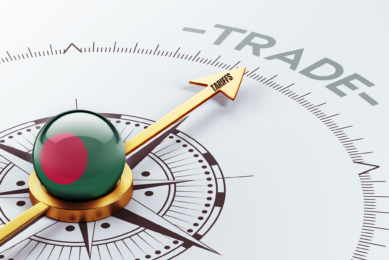AFTA starts new phase of growth in Asia
Thailand and its neighbours have entered a new era with the arrival of the much-hyped Asean Free Trade Area (Afta), and while some business sectors are nervous about the potential impact, many economists foresee a new phase of growth and prosperity.
Among the optimists is the Thailand Development Research Institute (TDRI), which sees Afta as a milestone for the regional grouping that has been functioning for more than four decades.
Somkiat Tangkitvanich, the TDRI research director, noted that the Afta process in fact started in 1992, and if there were any big impact it would have already been visible by now.
The centrepiece of the pact is the elimination on Jan 1 of tariffs on nearly 8,000 items traded among six Asean members: Malaysia, Indonesia, Singapore, the Philippines, Brunei and Thailand.
One single Asian market
The four less-developed members – Cambodia, Laos, Burma and Vietnam – have until 2015 to cut their tariffs.
By 2015, says Dr Somkiat, "[Asean] will be integrated into a single market which is an important point because the market will be stronger and larger with a high population".
The latest phase of Afta eliminates tariffs to a total of 54,457 or 99.11% of all goods and services traded in the region. The average tariff rate in the six countries has now fallen to 0.05% from 0.79% in 2009.
"This is an important symbolic step up to other trade agreements such as Asean+3 and Asean+6 which is important," he said.
"Of course, governments will lose income from tax collections but in the long term the chances for exports are wider when compared with countries outside Asean."
Dr Somkiat acknowledged some manufacturing businesses would experience an impact from Afta, but in any case tariffs are only a small part of the factors that affect business performance.
"I don’t mean there won’t be an impact but it won’t be as strong as a tsunami. Thai businesses won’t be destroyed by Afta as many experts worry. In fact, if any sectors face trouble, it shows that they have low competitiveness. So entrepreneurs should think about how efficient they truly are."
Loss of market share
Some sectors may struggle according to the International Trade Studies Center at the University of the Thai Chamber of Commerce. It said the market share for four agricultural products – rice, cassava, palm oil and coffee beans – could fall by one to two percentage points, or US$60 million, in the regional market between 2010 and 2015. The four products had a combined share of 10% of the regional market in 2009.
Thailand expects to lose a 0.5% share of rice trade, or around $13 million, to Vietnam, which has cheaper rice.
The loss of palm oil market share to Malaysia was forecast at 2.6% or US$46 million because Malaysia is the world’s largest producer and highly efficient. Malaysian producers’ expansion to Indonesia will further lift their productivity.
Source: Bangkok Post











